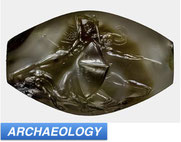
In all likelihood, every mammal living today comes from nocturnal stock, and mammals didn’t eschew the darkness for a daytime existence until dinosaurs went extinct, say scientists from University College London and Tel Aviv University.
The research group, whose work was published in Nature Ecology and Evolution, collected data on 2,415 mammal species with examples from all 29 orders of living mammals and 135 of the 148 living families of mammals. Each species was placed in one of five activity patterns the research team defined as:
“(1) nocturnal—active only or mostly in the dark; (2) diurnal—active only or mostly during daylight hours; (3) cathemeral—active both during the day and during the night; (4) crepuscular—active only at twilight, around sunrise and/or sunset; and (5) ultradian—active in cycles of a few hours.”
The group created frameworks based on hypotheses, plugged data into BayesTraits version 3, (a computer package that analyzes trait evolution), and - lots of statistics later - reached its conclusions.
Researchers also found that simian primate ancestors were one of the first groups of mammals to fully commit to a diurnal lifestyle, sometime between 52 and 33 million years ago.
In describing their conclusions, study co-author Professor Kate Jones (UCL Genetics, Evolution & Environment) said,
“It’s very difficult to relate behavior changes in mammals that lived so long ago to ecological conditions at the time, so we can’t say that the dinosaurs dying out caused mammals to start being active in the daytime. However, we see a clear correlation in our findings.”
The group also says that for 100 million years mammal diversity was low, but, after expanding into daytime niches, the order diversified very quickly. However, they say, more research needs to be done before concluding diurnal niche exploitation itself led to the explosive uptick in mammalian species.



